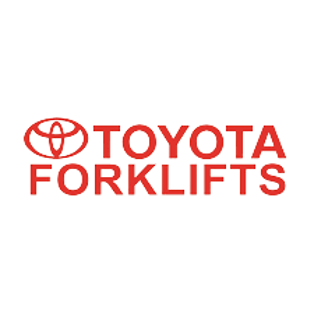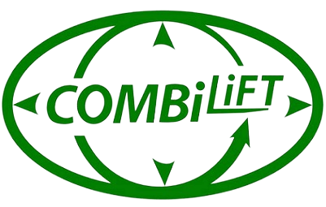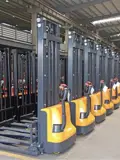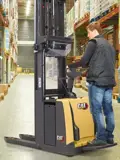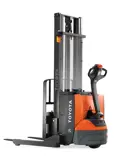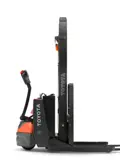Forklift Stacker
A forklift stacker, also known as a walkie stacker or pedestrian stacker, is a type of material handling equipment used to lift, move, and stack loads in warehouses, factories, and other industrial settings. Unlike traditional forklifts that are driven by operators, forklift stackers are operated by walking behind or alongside the equipment. They are particularly useful for handling palletized loads at lower lift heights and in confined spaces. Here's an overview of forklift stackers:
Key Features of Forklift Stackers:
-
Manual or Electric Operation: Forklift stackers come in both manual and electric-powered versions. Electric stackers are battery-powered and offer greater ease of use and efficiency.
-
Lifting Mechanism: Stackers are equipped with a lifting mechanism similar to that of a forklift. They have forks or a platform that can be raised and lowered to lift and transport loads.
-
Walk-Behind or Walk-Along: Operators either walk behind the stacker or walk alongside it while operating the controls.
-
Load Capacity: Stackers have varying load capacities, with manual stackers generally handling lighter loads compared to electric stackers.
-
Lift Height: Stackers are designed for lower lift heights compared to traditional forklifts. They are ideal for loading and unloading shelves, racks, and vehicles at moderate heights.
-
Maneuverability: Forklift stackers are designed for maneuvering in tight spaces, making them suitable for smaller warehouses or areas with limited space.
-
Control System: Stackers are equipped with controls that allow operators to raise, lower, and move the forks or platform.
-
Stability: Stackers are designed for stability during lifting and movement, especially electric stackers with stabilizing legs.
Advantages of Forklift Stackers:
-
Compact Size: Stackers are compact and require less space compared to traditional forklifts, making them suitable for smaller facilities.
-
Cost-Effective: Manual stackers are cost-effective options for organizations with lighter lifting needs and limited budgets.
-
Maneuverability: Stackers' maneuverability in tight spaces helps optimize space utilization and improve efficiency.
-
Ease of Use: Electric stackers are easy to operate and require less physical effort from operators.
-
Safety: Stackers are designed with safety features such as braking systems, load stabilizers, and safety guards to prevent accidents.
-
Flexibility: Stackers are versatile for various material handling tasks, including stacking, lifting, and transporting loads.
Considerations:
-
Load Capacity and Lift Height: Choose a stacker that can handle the weight and lift height of your typical loads.
-
Power Source: Decide whether a manual or electric stacker suits your operational needs better.
-
Operator Training: Proper training is essential for safe operation and minimizing the risk of accidents.
-
Maintenance: Regular maintenance is necessary to ensure the stacker's optimal performance and longevity.
-
Safety: Emphasize safety protocols and ensure that operators are familiar with the stacker's controls and safety features.
Forklift stackers are valuable tools for efficiently handling palletized loads in various environments. When considering a stacker for your operation, assess your load requirements, space availability, and lifting heights to choose the appropriate stacker type and configuration.

